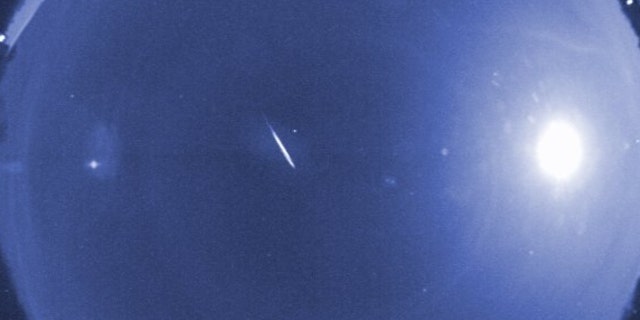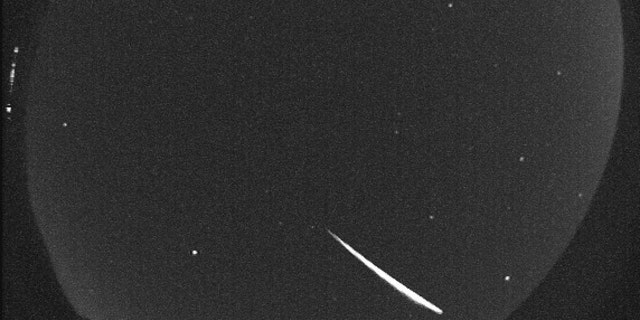[ad_1]
The Quadrantid meteor shower, the initial of the year as well as among the very best screens, was coming to a head Wednesday early morning in the middle of a brilliant moon as well as gloomy climate condition.
The moon will certainly happen on Friday, bringing brilliant moonlight in the days in advance.
According to Space.com, the moon’s luster has actually made it difficult to see just about the extremely brightest meteors this year, which are most noticeable prior to the break of dawn.
Another barrier is energetic weather condition today over a lot of the U.S.
WALTER CUNNINGHAM, LAST SURVIVING NASA APOLLO 7 ASTRONAUT, DIES AT 90: ‘TRUE HERO’
FOX Weather reported Tuesday that parts of western Texas can have a shot at a clear sight.

.
False-color picture of an unusual very early Quadrantid, caught by a NASA meteor video camera in 2010..
(( NASA/MEO/B. Cooke) )
According to NASA, the Quadrantids originate from the asteroid 2003 EH1.
The shower emits from the northeast edge of the constellation Boötes, initially called “Quadrans Muralis.”

.
The Quadrantid meteor shower is seen over a park in Yantai, East China’s Shandong Province, in the morning of Jan. 4, 2022..
(( Photo credit history need to review Yu Liangyi/ Costfoto/Future Publishing using Getty Images))
HUBBLE SPACE TELESCOPE IMAGE CAPTURES ‘GLITTERING SWARM’ OF STARS ABOUT 28,000 LIGHT-YEARS AWAY
Beginning in late December as well as going through Jan. 16, the Quadrantids height for simply a couple of hrs.
As many as 200 Quadrantid meteors— and also as couple of as 60– can be seen per hr under excellent problems.

.
NASA’s All Sky video cameras caught this picture of a Quadrantid meteor overnight, the meteor was relocating at 93,000 miles per hr. This one-inch size participant of the Quadrantid meteor shower leaves a dazzling touch in the north Georgia skies prior to shedding up 44 miles over Earth’s surface area.
( NASA’s All Sky video cameras)
They are additionally recognized for their brilliant fireball meteors as well as are best checked out in the Northern Hemisphere.
CLICK HERE TO GET THE FOX NEWS APP
Next year is anticipated to be a much better watching experience, yet skywatchers can see the α-Centaurid meteor shower height right before Valentine’s Day.
.



